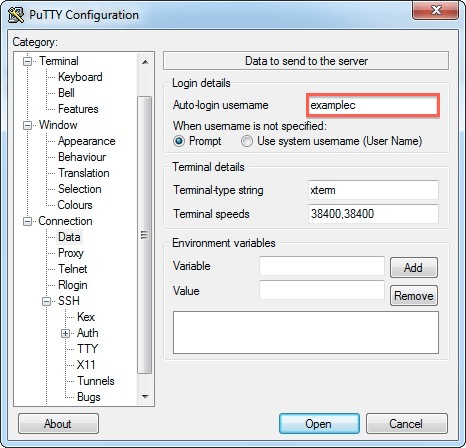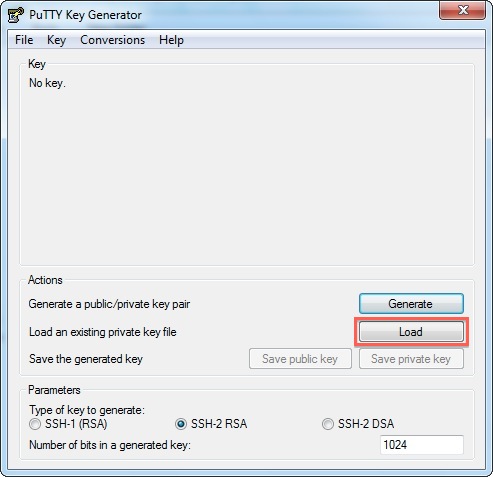Bluehost Generate A New Private Key
- Bluehost Generate A New Private Key Club
- Bluehost Generate A New Private Key Generator
- Bluehost Generate A New Private Keyboard
- Bluehost Generate A New Private Key Code
- Bluehost Generate A New Private Key West
Is that the correct usage, or is it better to generate a new pair for each site? It would seem to me that this is insecure - any site I trust with nefarious intention or that is hacked could take my private key when I connect the first time, and use it to go into the other sites.
- Mar 16, 2016 Go to dkimcore.org, and create a public/private key pair. Just enter your domain, and press the “Generate” button. Just enter your domain, and press the “Generate” button. In a few moments, you’ll get a key pair.
- Sep 11, 2018 Create SSH Key on Bluehost In order to access your server using a terminal window. You need to fist enable SSH access on your account. IF you own a shared hosting account with Bluehost it is.
- Generating the Key. Login to your Bluehost Control Panel; Choose SSH / Shell Access, in the Security section. Click Manage SSH Keys; Choose to Generate a new Key; Enter a new Key password. Choose DSA or RSA for the type. It is recommend that you choose RSA. Choose a Key size, it is recommend to use 2048 or higher. Click Generate Key; Click the Go Back button. Authorize the Key.
- Dec 14, 2018 Create a Public Key and Private Key for SSH, PuTTY, or SFTP Client, using your Webhost Control Panel. Bluehost now has a new 29-character limit on my main account password, and so, from now on, and to avoid any possible problems from having a SSH Key password that is too long. PuTTY, or SFTP Client, using your Webhost Control Panel.
- Generating the Key. Login to your Bluehost.in Control Panel; Choose SSH / Shell Access, in the Security section. Click Manage SSH Keys; Choose to Generate a new Key; Enter a new Key password. Choose DSA or RSA for the type. It is recommend that you choose RSA. Choose a Key size, it is recommend to use 2048 or higher. Click Generate Key; Click the Go Back button. Authorize the Key.
- Reusing Private/Public Keys. Ask Question. I have accounts on several third party sites - Bitbucket, Bluehost, etc. From what I've gathered, it is common practice to use one key pair for all idrsa, idrsa.pub, but only to give out the public key. Knowledge of the public key does not give the power to generate new signatures, which is.
To sign an assembly with a strong name, you must have a public/private key pair. This public and private cryptographic key pair is used during compilation to create a strong-named assembly. You can create a key pair using the Strong Name tool (Sn.exe). Key pair files usually have an .snk extension.
Note
In Visual Studio, the C# and Visual Basic project property pages include a Signing tab that enables you to select existing key files or to generate new key files without using Sn.exe. In Visual C++, you can specify the location of an existing key file in the Advanced property page in the Linker section of the Configuration Properties section of the Property Pages window. The use of the AssemblyKeyFileAttribute attribute to identify key file pairs was made obsolete beginning with Visual Studio 2005.
Create a key pair
To create a key pair, at a command prompt, type the following command:
sn –k <file name> /planetside-2-beta-key-generator.html.
Bluehost Generate A New Private Key Club
In this command, file name is the name of the output file containing the key pair.
The following example creates a key pair called sgKey.snk.
If you intend to delay sign an assembly and you control the whole key pair (which is unlikely outside test scenarios), you can use the following commands to generate a key pair and then extract the public key from it into a separate file. First, create the key pair:

Bluehost Generate A New Private Key Generator

Next, extract the public key from the key pair and copy it to a separate file:
Bluehost Generate A New Private Keyboard
Once you create the key pair, you must put the file where the strong name signing tools can find it.
When signing an assembly with a strong name, the Assembly Linker (Al.exe) looks for the key file relative to the current directory and to the output directory. When using command-line compilers, you can simply copy the key to the current directory containing your code modules.
Bluehost Generate A New Private Key Code
If you are using an earlier version of Visual Studio that does not have a Signing tab in the project properties, the recommended key file location is the project directory with the file attribute specified as follows: